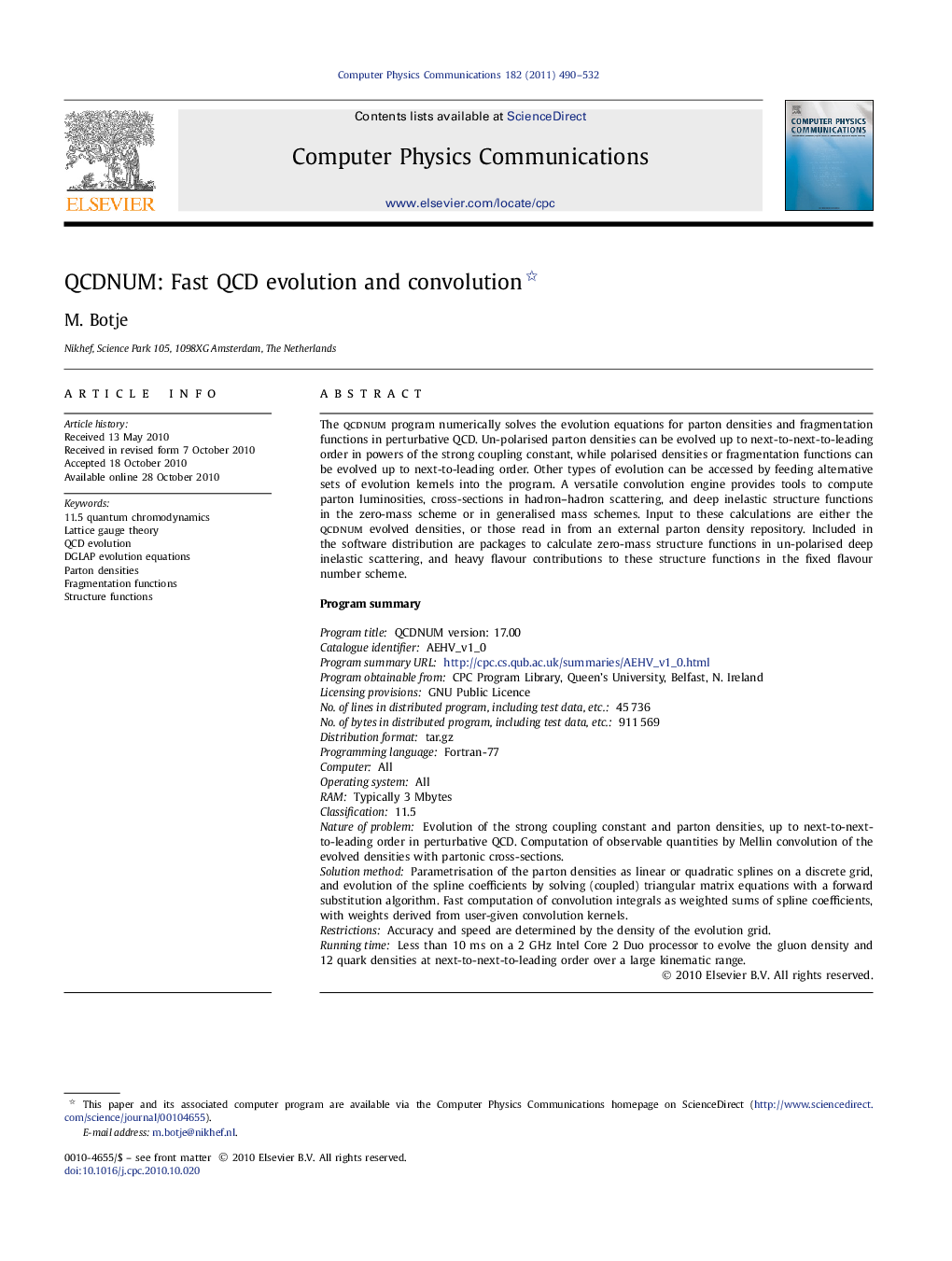| کد مقاله | کد نشریه | سال انتشار | مقاله انگلیسی | نسخه تمام متن |
|---|---|---|---|---|
| 501859 | 863661 | 2011 | 43 صفحه PDF | دانلود رایگان |

The qcdnum program numerically solves the evolution equations for parton densities and fragmentation functions in perturbative QCD. Un-polarised parton densities can be evolved up to next-to-next-to-leading order in powers of the strong coupling constant, while polarised densities or fragmentation functions can be evolved up to next-to-leading order. Other types of evolution can be accessed by feeding alternative sets of evolution kernels into the program. A versatile convolution engine provides tools to compute parton luminosities, cross-sections in hadron–hadron scattering, and deep inelastic structure functions in the zero-mass scheme or in generalised mass schemes. Input to these calculations are either the qcdnum evolved densities, or those read in from an external parton density repository. Included in the software distribution are packages to calculate zero-mass structure functions in un-polarised deep inelastic scattering, and heavy flavour contributions to these structure functions in the fixed flavour number scheme.Program summaryProgram title: QCDNUM version: 17.00Catalogue identifier: AEHV_v1_0Program summary URL:http://cpc.cs.qub.ac.uk/summaries/AEHV_v1_0.htmlProgram obtainable from: CPC Program Library, Queen's University, Belfast, N. IrelandLicensing provisions: GNU Public LicenceNo. of lines in distributed program, including test data, etc.: 45 736No. of bytes in distributed program, including test data, etc.: 911 569Distribution format: tar.gzProgramming language: Fortran-77Computer: AllOperating system: AllRAM: Typically 3 MbytesClassification: 11.5Nature of problem: Evolution of the strong coupling constant and parton densities, up to next-to-next-to-leading order in perturbative QCD. Computation of observable quantities by Mellin convolution of the evolved densities with partonic cross-sections.Solution method: Parametrisation of the parton densities as linear or quadratic splines on a discrete grid, and evolution of the spline coefficients by solving (coupled) triangular matrix equations with a forward substitution algorithm. Fast computation of convolution integrals as weighted sums of spline coefficients, with weights derived from user-given convolution kernels.Restrictions: Accuracy and speed are determined by the density of the evolution grid.Running time: Less than 10 ms on a 2 GHz Intel Core 2 Duo processor to evolve the gluon density and 12 quark densities at next-to-next-to-leading order over a large kinematic range.
Journal: Computer Physics Communications - Volume 182, Issue 2, February 2011, Pages 490–532